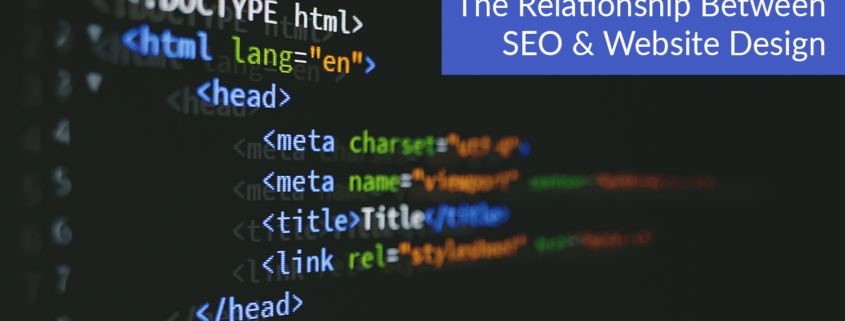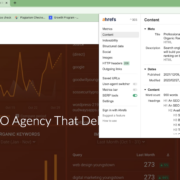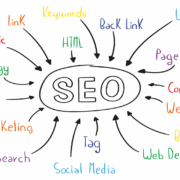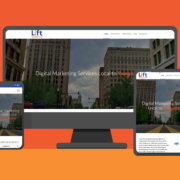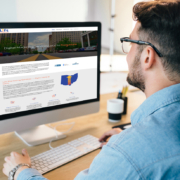How Do SEO and Website Design Work Together?
There are many ways in which website design best practices will play directly into search engine optimization (SEO) best practices. These ways of optimizing your website for SEO often have a way of making your website more usable and pleasant for users. This is entirely by design, as Google created their algorithm with the idea of giving users the best possible websites and content possible.
But how do you use web design practices to optimize your website for SEO and achieve higher rankings? Which web design techniques contribute to SEO value? What aspects of SEO strategy help create better websites that users enjoy more? We have the answer to all those FAQs right here. Stick with us while we explain how web design and SEO best practices tie into one another to improve your position in search engine results pages (SERPs) – don’t worry, it won’t take too long.
Website Page Speed
The faster your webpages are able to load in, the better for your user experience, and therefore your SEO. Not only is page speed a confirmed ranking factor for Google’s algorithm, faster load times lead to lower bounce rates, which boosts technical SEO value as well.
If it takes your webpages longer than 3 seconds to load in, you could be risking increased bounce rates. Ideally, your page load time should be below 2 seconds.
Improving your website performance is crucial for boosting SEO. In order to improve site speed, there are several things you can do, including but not limited to:
- Compressing images and videos
- Reduce the number of redirects you use
- Get rid of unnecessary plugins
- Minify your Javascript, CSS, and HTML
In general, make sure to keep an eye on different usability metrics to make sure that your website is operating properly.
Mobile Optimization
When working towards a user-friendly website, it is important to not forget about optimizing for mobile. To do this, you need to make sure that you use responsive design.
Responsive design means that the website will adapt to the size of the screen it is being viewed on. This is crucial for a mobile friendly site, as website assets need to shrink down, and at times rearrange, in order to be viewable on smartphones and tablets.
The majority of internet searches occur on a mobile device. If your website is not mobile-friendly, you are going to see massive jumps in your bounce rate, and your SEO value will take a hit as a result. Mobile-friendliness is key to ensuring that your website is user-friendly, and a user-friendly website is a SEO-friendly website.
Site Structure
Not only is having high quality content important for SEO, you also need to make sure that your content is organized with good website structure.
Site structure, also known as website architecture, refers to how you set up your website’s navigation between pages to have your content easy to find, and well organized. Break your website content down into logical categories and subcategories that will branch out from your home page.
In the design process, you need to set up a site map so you know how to best organize your content in a way that makes sense for the users. A good way to organize your webpages well is by using keyword clustering or topic clustering to keep relevant keywords and content well organized. This helps you keep relevant and related topics close to each other in your website’s structure, and has added SEO benefits as well from using terms found in your keyword research.
User Experience
As stated previously, user experience is paramount for SEO. Google places user-friendliness in very high regard as a search engine ranking criteria, in order to try to deliver the most high quality content to users they can. Providing favorable website content and having high functionality are crucial to ranking highly in SERPs.
Make sure you check up on core web vitals, direct your content to your target audience, improve readability, etc. to keep users engaged and happy with your website. SEO-friendly web design is nearly identical to saying user-friendly web design: the better the user experience, the easier it will be to rank higher in SERPs.
Crawlability
The best way to be optimized for the search engine itself is to make sure your website is easy to crawl and index. The practices of crawling and indexing are how search engines learn what websites are about, and the data collected during crawling and processed during indexing helps determine rankings.
There are several methods to improve the crawlability of your website. These methods include but are not limited to:
- Using clear and concise URL structure
- Logical and simple website structure
- Internal links
- Submit sitemap to Google Search Console
- Use specific, keyword-optimized file names for any images
Doing these will help Google’s bots crawl your website more efficiently, and will help boost your rankings.
Heading Structure
Lastly, good heading structure is beneficial for search engines and users alike. Good heading structure helps keep your page organized and easy to follow the flow of your page’s content. While including keywords in header tags does not have a more significant impact compared to using relevant keywords in your body text, it helps greatly with user experience.
Good heading structure can also help search engines crawl your website more effectively, being able to better understand the purpose of each page. This makes heading structure important for being search engine friendly.
Also, do not neglect the importance of your page titles, meta descriptions and alt tags. These are important pieces of improving position in organic search and getting more website visitors. The title tag and meta tag are the first things a user sees when your website appears in search results, so it is important that you put thought behind them, and include important keywords.
Ready to Optimize Your Website?
Now that you know how SEO works in tandem with web design, you should be able to make sure your website is fully optimized by the time you are ready to go live with a brand new website, or a website redesign. Improving the overall usability of your website will boost your rankings and put you on the path to success: more organic traffic, higher conversion rates, and more sales.
If you still are not sure if you are ready to design and optimize your website, that’s ok! You are not alone in your digital marketing journey. Lift Marketing is here to help you with anything you may need for your digital marketing strategy, including web design and SEO services. Just reach out to us here so we can get started!

